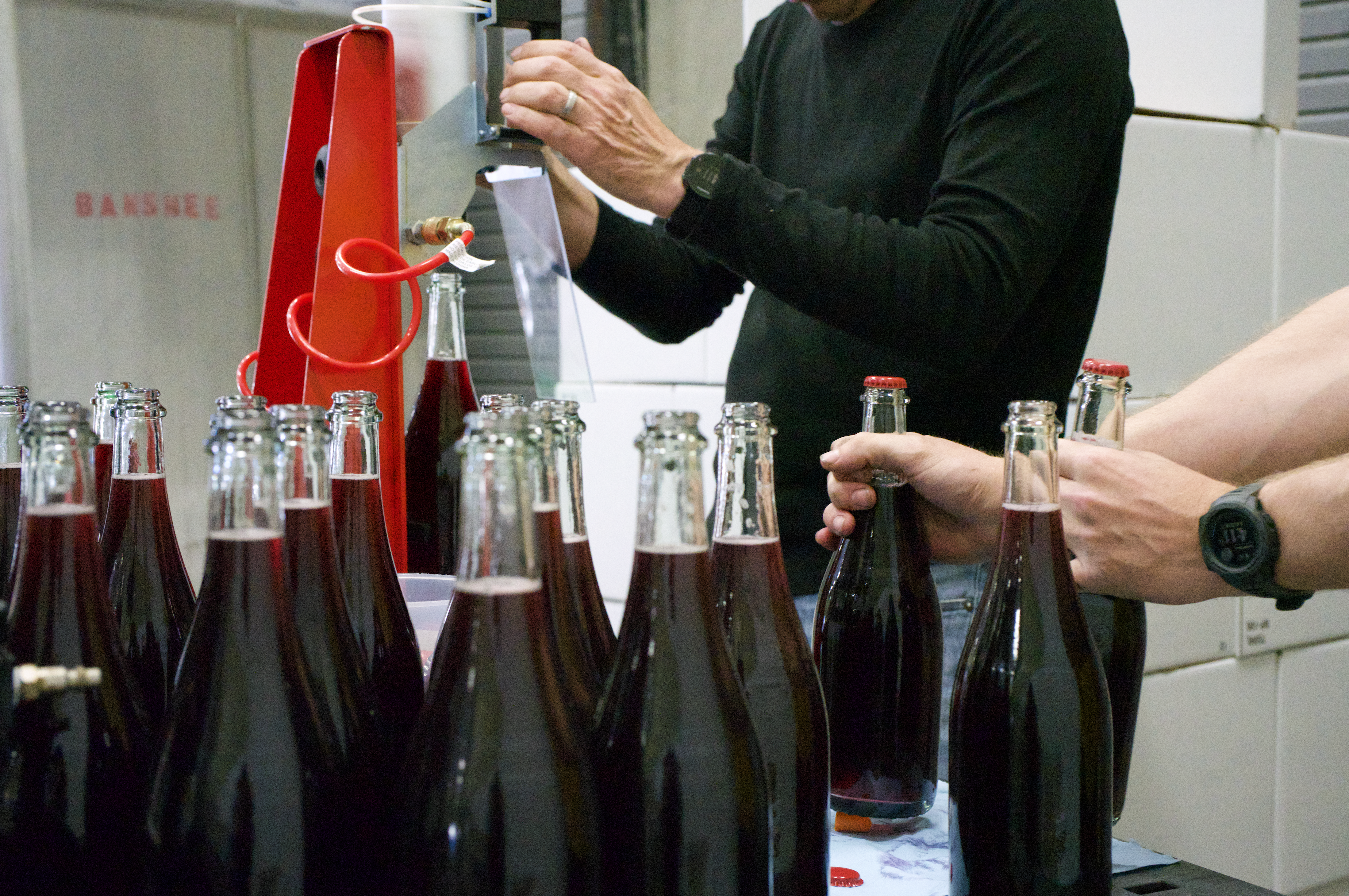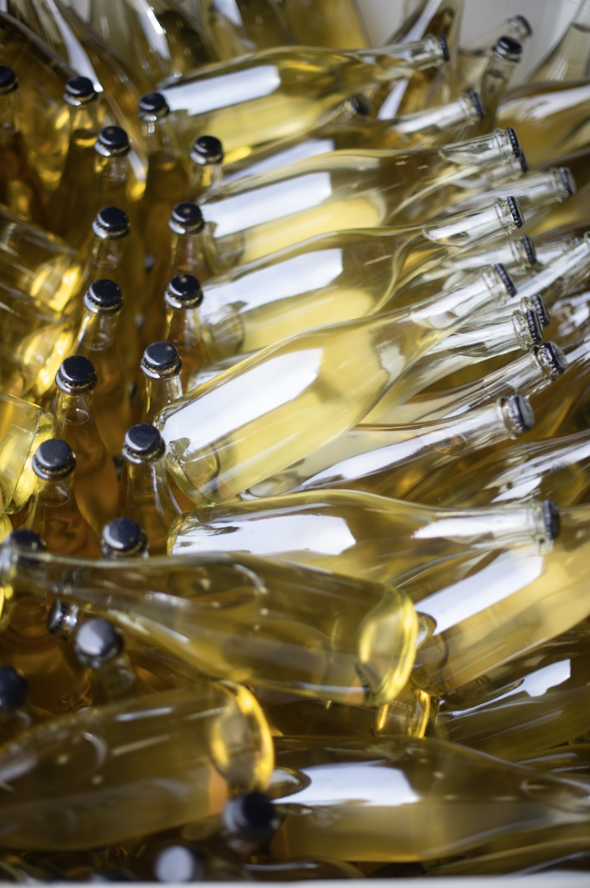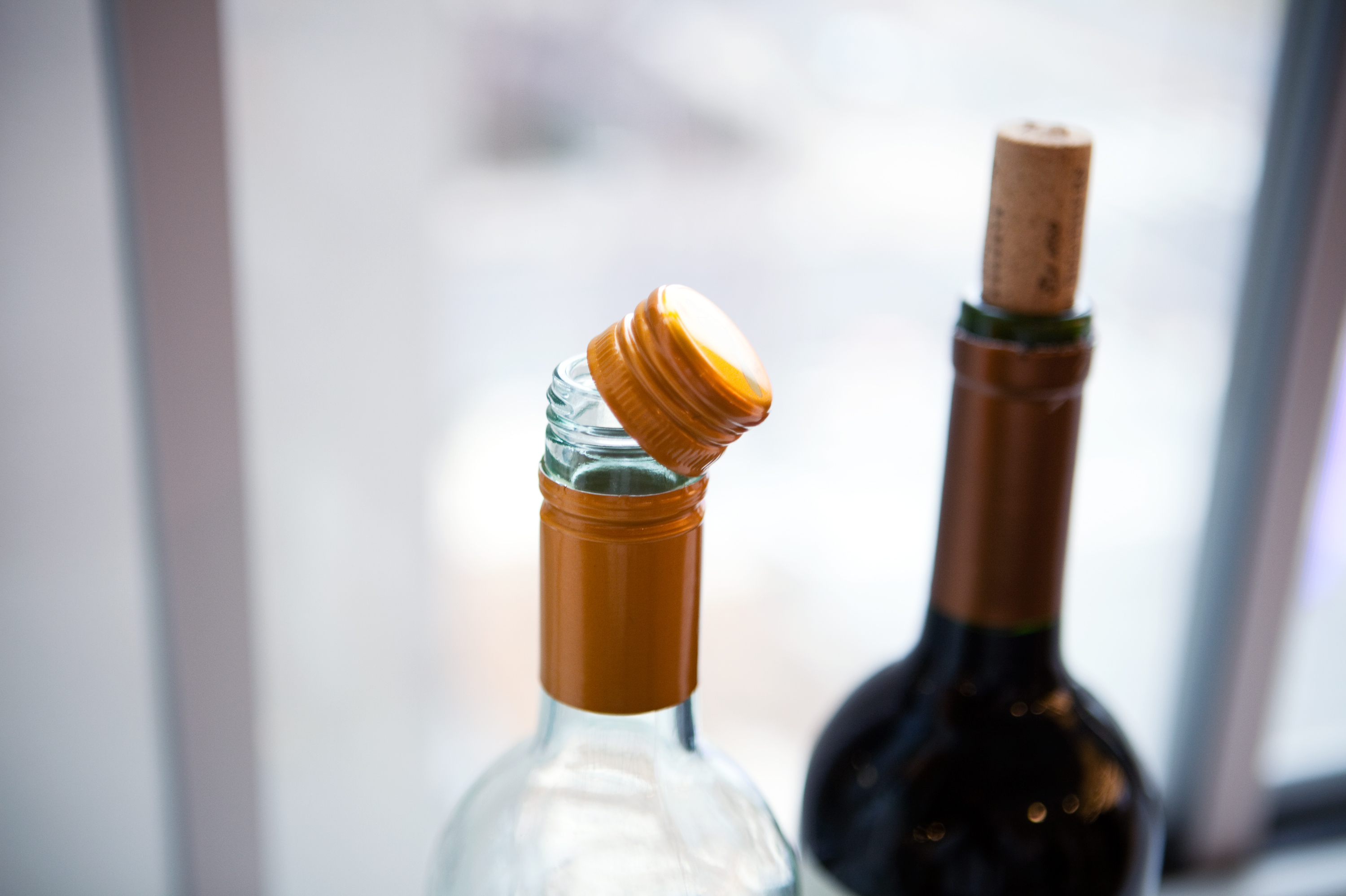Lubrication Blog
Storing & Opening Sparkling Pét-Nat
What is Pét-Nat?
So you’ve heard of it. But what the hell is it? Pét-Nat is short for petillant naturel (aka “naturally bubbling”) and is a sparkling wine made according to the traditional ancestral method. Pét-Nats are bottled while the wine is still fermenting, which results in trapped CO2, creating bubbles. This process requires minimal intervention from the winemaker and, like most wine made naturally, it typically ranges from 10-12% ABV (alcohol by volume). Thanks to their natural yeast, Pét-Nats are exciting and produce funky aromas and characteristics unlike any other style of wine. The traditional method produces the bubbliest of sparkling wines at a whoppin' 5-6 atmospheres of pressure. The result is a rustic and lively wine true to its roots.

How to Store Pét-Nat?
While all sparkling wine should be served cold—both for the best flavor and to keep those bubbles suspended in the wine—the wilder, less-filtered styles especially require it. Essentially, like any wine, you’ll want to store the bottle in a cool, dark spot. Because of the sediment in the bottle, you want to keep the bottle standing upright so that the sediment settles to the bottom. Pét-nat isn’t meant to be kept in a cellar – it can last a year or two if stored properly, but generally speaking, isn’t meant to be aged. In other words, pop a bottle and start enjoying ASAP! Put in the refrigerator to chill before serving, and serve as cold as possible. It is important to put the bottle in the fridge as opposed to an ice bucket because the neck should also stay chilled. If your wines have been shipped, this next part is super important! First, wait 3-6 weeks before opening. We know it’s hard but it’ll be worth the wait.

How to Open Pét-Nat?
Open quickly as most Pet-Nats have lots of bubbles that can spill over. Use a continuous pour into several glasses or into a decanter so as to not kick up the lees at the bottom of the bottle. Stop pouring when you start to see a little sediment pouring out. Leave the lees in the bottle. It is a good idea to pry the crown cap slightly and let the pressure fizzle out before fully opening the bottle, to avoid explosion.

Our Pét-Nats?
The first two times we attempted to make a Pét-Nat, things didn't go as planned. Two years of learning and refinement later, we finally perfected the craft and the result was Space Crush in 2018. How'd it turn out? OH MY GOD. We nailed this one. It is fresh, crisp, and complex with a floral perfume and green apple, peachy notes that endlessly orbit around your mouth. The texture is fascinating, the bubbles so satisfying and the finish extends to the moon.
In 2019, we released the wildly popular Pop-Nat. Tart raspberries and strawberries hit your palate on the first sip, with tiny bubbles that dance across your palate and make way for a wave of crisp acidity.
We released Come, Saints and Sinners the following year. Come, Saints and Sinners is a Carbonic Macerated 100% Petite Sirah Pétillant Naturel sparkling wine made from the legendary Rorick Heritage Vineyard in Calaveras County, California. It's interesting, but not too weird. Complex, but so damn drinkable. Honest to god, this is one of the coolest wines ever produced by Tank Garage Winery.
In April of 2021, we released Tokyo Love Hotel. Big mouthwatering aromas of wild cherry and blackberry candy bubble from the glass. In your mouth, it’s got a zangy intensity of flavor with those fresh flavors of blackberry, raspberry woven into small delicate bubbles. It’s like a Lambrusco plus skittles and we love it!

Introduction to Tank
Hey there! Welcome to Tank Garage Winery, the coolest winery in Napa Valley. No... really. Visiting the tasting room is like taking a trip back in time to a 1920s gas station turned speakeasy, pouring rad as shit wines and playing bomb as hell music. Cool California vibes mixed with vintage decor bring to fruition the most quirky encounter you’ll get at a winery. Every day, we celebrate this crazy dream turned into a movement where we get to do cool shit and you get to come along for the ride. We celebrate the adventurers, the dreamers, the weirdos, the free spirits, and the misfits. So next time you’re in town, you won’t want to miss out. In addition to red wine, white wine, and rose, we also dabble in the dazzling worlds of orange wine, sparkling pet nats, natural wine, carbonically macerated wines, and so on. We collaborate with tattoo artists, digital artists, and photographers to create some of the most eccentric labels you’ve seen on a bottle. So if you’re adventurous and love trying new things, we’re the winery for you.
If you’re game, join the club and get to know our wines, the vineyards we source our fruit from, and the rad folks who bring them to you. It’s one you won’t forget.
Getting Closure with Wine Closures
A bottle of wine is representative of the winery and the folks behind its creation; it is the product of viticulture, winemaking, and marketing. This makes the choice between wine closures so critical. Wine closures are a term used in the wine industry to refer to the object used to seal the bottle and avoid unfavorable contact between the wine and oxygen. There are endless options made from both natural and synthetic material. Corks are the most traditional and common type of closure and they come in the form of natural corks, plastic corks, and technical corks. The closure can tell a great deal about the wine it encompasses in regards to longevity, quality, and tradition. The best way to choose your wine closure is to determine how much time you expect the wine to live in the bottle before opening.
OG Cork
The OG cork dates back to the 17th century when glass bottles replaced clay amphorae and wooden barrels. Cork is typically the preferred method for consumers. Corks are 90% natural cork and 10% natural glue mixed with cork granules. This combination provides strong, high-quality corks with elasticity that hold the cork in place. These are the best corks to use if you are looking for a strong sealer that can be stored for a long time. Keep in mind that corks can be fairly expensive to make and when using them, there is always a risk of cork taint. Using alternatives can be cheaper, avoid the risk of cork taint, and can be more practical. Once fitted with a cork, bottles should be stored on their side or upside down. This will keep the cork from drying out and losing its seal. Once it’s bottled, make sure to store the wine on its side.
Synthetic Corks
Synthetic corks are significantly cheaper than their OG counterparts, costing about a dime to 15 cents each; Let’s just call it the low-budget brother. They are designed to look, function, and “pop” like the natural cork. Synthetic corks are made from plastic compounds called polyethylene (polyethylene is also used for milk bottles and plastic pipes) which eliminates the risk of cork taint. Although, because they lack elasticity, it’s easier for oxygen to get through and for the wine to leak. Synthetic corks are best suited for wines you intend on opening within 6-12 months. Unlike natural corks, most synthetic corks are made from material that is not biodegradable but it is recyclable. Synthetic corks are very consistent in oxygen transmission, allowing the winemaker to tweak the oxidation rate of the wine by choosing from a range of synthetic corks with different rates of known oxygen transmission.

Screwing Around with Screw Caps
Many Americans believe screw-caps are indicative of low-quality wine but that couldn’t be further from the truth. Screw-caps are made from aluminum materials that thread onto the bottleneck. There are actually two parts: the metal cap and the liner inside the top of the cap that seals to the bottle lip. The liner is the important piece controlling how much oxygen can get into the wine. Screw-caps are used predominantly in Austria, Australia, and New Zealand. Many of these producers believe that screw caps are the solution to cork taint, benefit aging, and preserve the aromatics. Screw caps have only been around since the ‘60s but have become increasingly popular as an alternative wine closure. According to Wine Spectator, “A 10-year study done by the Australian Wine Research Institute indicated that wine retaining the most freshness over time had screw cap closures.” Interesting stuff, right?
Sparkling Muselets
A muselet is the wire cage that fits over a bottle of champagne, sparkling wine, cider, or beer to prevent the cork from emerging under the pressure of its carbonated contents. The name is derived from the French museler, or to muzzle. The wire cage secures the cork in the bottle, keeping it sealed until it is ready for consumption. Muselets traditionally require six half-turns counter-clockwise to open. Legend has it that Dom Perignon first had the idea to replace the original Champagne stoppers which were wooden bungs wrapped in oil-soaked hemp then sealed with wax and a cork stopper. Muselets are now machine-made in the millions, varying in size, color, and design. Many folks even like collecting their muselets, as different manufacturers will feature their emblems.

Bottle Caps
Crown caps (aka crown seal, crown cap, or just cap) were the first form of a crimped bottle cap, invented by Charles Robert Spencer. Spencer was a machinist that sold the patent to another company that quickly began mass-producing the product. The crown cap was the first highly successful disposable product that allowed soda bottles to be stored upright. Bottles that can accommodate crown caps can usually handle a bit of pressure. You don’t typically see a lot of wine sealed with a crown cap but it is becoming increasingly popular. At Tank, we’ve used crown caps on all of our Pet-nat sparkling wines. Not only do they look cool, but they also seal the vessel that undergoes a secondary fermentation inside the bottle.